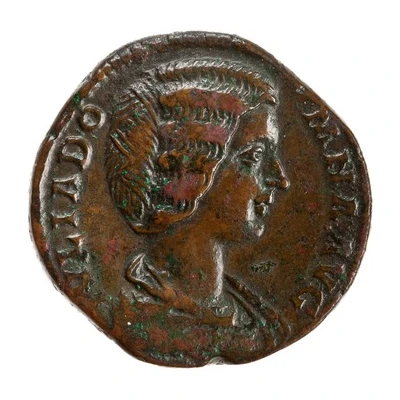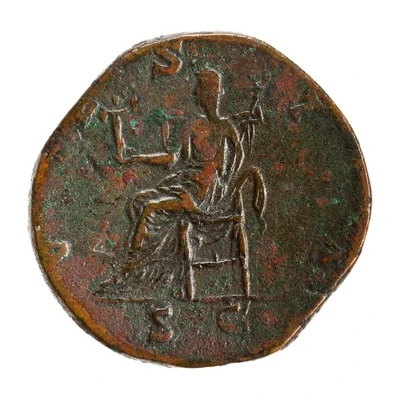Sestertius - Septimius Severus DIS AVSPICIB TR P II COS II P P S C; Hercules, Bacchus, and Liber
194 year| Bronze | 19.1 g | - |
| Issuer | Rome › Roman Empire (27 BC - 395 AD) |
|---|---|
| Emperor | Septimius Severus (Lucius Septimius Severus) (193-211) |
| Type | Standard circulation coin |
| Year | 194 |
| Value | 1 Sestertius = ¼ Denarius |
| Currency | Denarius, Reform of Augustus (27 BC – AD 215) |
| Composition | Bronze |
| Weight | 19.1 g |
| Shape | Round (irregular) |
| Technique | Hammered |
| Demonetized | Yes |
| Updated | 2024-10-06 |
| Numista | N#270052 |
|---|---|
| Rarity index | 100% |
Reverse
Hercules, naked, standing left, holding club in right hand and lion skin over left arm, and Bacchus, naked, standing left, holding cup in right hand and thyrsus in left hand; at feet of Bacchus, panther.
Script: Latin
Lettering: DIS AVSPICIB TR P II COS II P P S C
Translation:
Dis Auspicibus. Tribunicia Potestate Secunda, Consul Secundum, Pater Patriae. Senatus Consultum.
The protector gods. Older of tribunician power for the second time, consul for the second time, father of the nation. Decree of the senate.
Comment
Source:Online Coins of the Roman Empire (OCRE)
Interesting fact
The Sestertius coin featuring Septimius Severus (194 AD) is interesting because it showcases the Roman Empire's use of propaganda through currency. The coin's reverse side features Hercules, Bacchus, and Liber, which were symbols of strength, fertility, and liberty, respectively. By including these figures, the Roman government aimed to promote the idea that their leader, Septimius Severus, was a powerful and benevolent ruler who brought prosperity and freedom to the empire. This coin is a prime example of how currency can be used as a tool for political propaganda, highlighting the government's efforts to shape public opinion and promote their ideologies.

